Impact Report Ripple Effect Rwanda
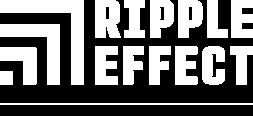
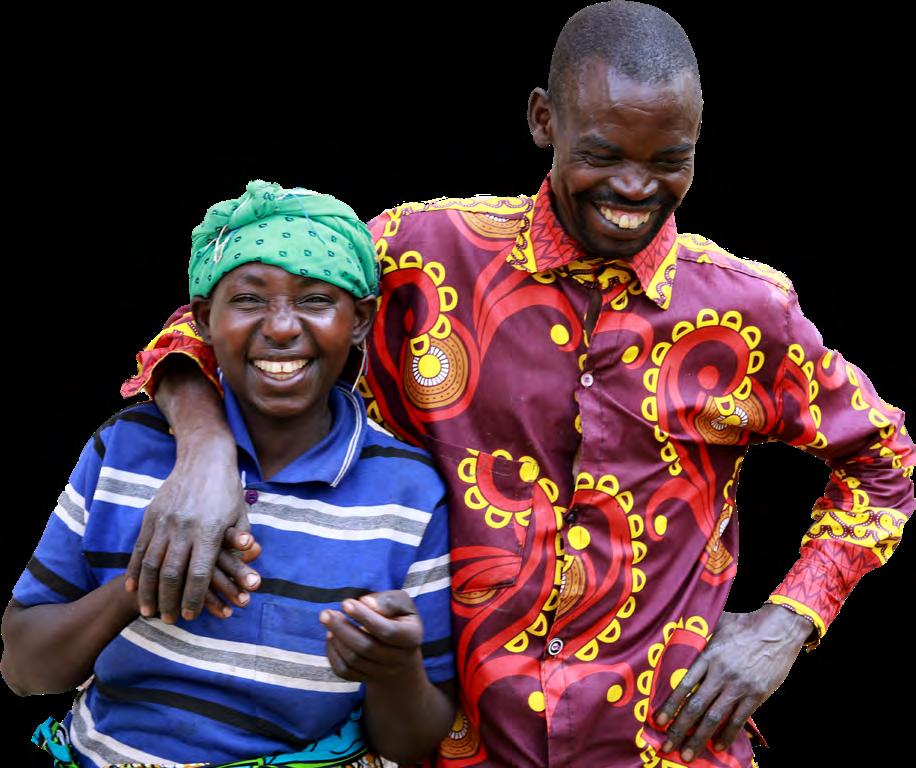
2017-23
87% of women now involved in decisionmaking (Ikawa n’Inka)
80 litres more milk produced per month (Inka Nziza)
100% of farmers adopting climate-smart solutions are now food secure (Greening Girinka)
It starts on a Rwandan farm











































































































































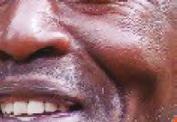



















































































































































































































































































































































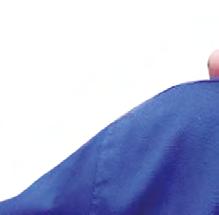















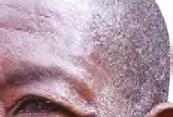




























































2
It starts on a Rwandan farm
Contents
4 Welcome
6 The ripple effect
9 The difference between food and nutrition
12 Empowering women leaders
15 From subsistence to small businesses
21 Livestock on sustainable farms
23 The Jersey cow solution, by Eugene Ndayambaje, Project Manager
24 Our climate work
26 Building trust and confidence, by Valens Kanakuze, Project Manager
27 Our vision for 2030
Our vision
A confident, thriving and sustainable rural Rwanda.
Our mission
To inspire and equip Rwandan communities to transform lives and protect the planet.
Our values
Integrity, Compassion and Accountability
Ripple Effect Rwanda project locations
WESTERN (Iburengerazuba)
NORTHERN (Amajyaruguru)
EASTERN (Iburasirazuba)
KIGALI (Umujyi wa kigali)
SOUTHERN (Amajyepfo)
Cover: Eugenie and Felicien
Cover: John on his farm in Rarazinge
Greening Girinka (Bugesera and Ngoma districts)
Inka Nziza (Nyanza, Nyaguru, Rulindo, Kayonza, Rwamagana, Bugesera)
Inside cover: Celestin and Therese, participants in the Ikawa n’Inka project
Inside cover: Celestin and Therese, par ticipants in the Ikawa n’Inka project
Ikawa N’inka (Bugesera, Nyaruguru, Nyanza)
Bugesera Ngoma Rulindo Kayonza Rwamagana Nyanza Nyaruguru
3
Welcome
At Ripple Effect, we know that everything starts on an African farm. We work alongside farmers to address issues such as food insecurity, pover ty, inequality and the effects of the climate crisis. And for every family that takes part in one of our projects , I am proud to say that three more benefit.
This report features six years of hard work, from 2017 to 2022. It mainly focuses on three projects, each very different and bold in its aspiration, each tailored to local needs and co-led with communities themselves in the driving seat
Ikawa n’Inka (Coffee and Cows) funded
2017 – 2021
Our work in these three projects has enabled vulnerable smallholder farming families to build a life free from poverty and hunger – while improving on gender relations, the environment, building resilience to the effects of the climate crisis and safeguarding the land for future generations.
Before these projects began, on average only two out of 10 people in projects areas were food secure. Now almost 10 out of 10 are food secure. Incomes have risen to well above the national average of $770 (833,700 RWF). Families are saving with this money and are now able to pay for health insurance on their own, improve their houses and hygiene, and crucially send their children to school
This is truly inspiring data, but beyond this our projects have enabled vulnerable people to take charge of their futures. They have developed the confidence, self-esteem, capabilities and support to be able to thrive.
I would like to say thank you to all our funders and part ners, who make our work possible, and especially to Starbucks Europe, Middle East and Africa (EMEA) who have sponsored this repor t. And I would like to congratulate all our project participants and project staff for the amazing work they continue to do. Together, we are achieving great impact in rural Rwanda.
Inka Nziza (Improved dairy cow) a two-phase project 2017 - 2021 funded

But our impact doesn’t end at food security. Our projects support farmers to start their own small businesses selling their produce or providing services to the community. Saving and lending associations and co-operatives are community-led initiatives that solidify the changes made within projects and ensure more people and future generations benefit from them too.
Greening Girinka (Piloting climate smar t approaches in crop-livestock intensification) from 2019 - 2022
In the Ikawa n’Inka project, average annual household savings have increased exponentially from $0 to $365 (395,200 RWF) by the project’s end. In Greening Girinka, they’ve more than quadrupled, from $35.65 to $155 (167,800 RWF) in a period of just three years.
We now have good health. Our children are eating healthily and we can pay for their school fees. This is because of Ripple Effect Rwanda, thank you.
Gaudance Mukandayisenga Inka Nziza
by Starbucks EMEA and The Starbucks Foundation.
by Jersey Overseas Aid
Laurent Munyankusi Country Director Ripple Effect Rwanda
4
Celestin now runs his own business as a paravet in the Ikawa n’Inka project
Our areas of expertise
Sustainable agriculture
Promoting traditional knowledge and new innovations to build food security, using agroecological methods with a climate-positive impact.
100% FARMERS
adopting climate-smar t solutions are now food secure (Greening Girinka)
Gender and social inclusion
Ensuring that the voices of women and marginalized people are heard, so they have more influence in their homes and communities.
87% WOMEN
now involved in decision-making (Ikawa n’Inka)
Enterprise
Creating financial resilience from farm incomes by developing micro-businesses and co-operatives.
80 litres
more milk produced per month (Inka Nziza)

5
The ripple effect
Families tell us that what they value most about working with Ripple Effect is becoming teachers and donors themselves, sharing their resources and skills with neighbors. As they learn more, grow more and sell more, a ripple effect of positive change quickly spreads – reaching far beyond the farm. For every family we work with, another three families benefit.
How we work
At Ripple Effect we know that farmers learn best from other farmers, so we work through self-help groups (SHGs). Members suppor t each other and share their knowledge and skills to create resilient progress that lasts long after the project ends. These are ‘direct’ project participants.

Self-help groups build on the national system of Umuganda (monthly community work schemes), par t of the post-genocide reconciliation that has helped build the forward-looking Rwanda in which we live today.
Photo (right): Gaspard being trained to grow tree seedlings as part of his self-help group
6
Our community approach
As par t of these self-help groups, some farmers are up skilled to become trainers themselves, and embed the knowledge they have acquired in the wider community. We also up skill government extension workers and local professionals such as vets, to make sure that communities have access to the services they need to thrive, long after the project ends
For every family we work with, another three benefit. This additional three are ‘indirect’ project par ticipants.
Ripple Effect is unique in the robust changes we see in both direct and indirect par ticipants, with the indirect par ticipants often achieving similar results. We measure both, so that we can accurately track our impact.
Indirect
Direct
Indirect Indirect
7
Our community approach in action
In the Ikawa n’Inka project, family food security increased from 7% to 100% for self-help group members, and from 10% to 100% for indirect families too.
Hunger months decreased from 4.9 months to 1.1 months for self-help group members, and from 4.9 to 1.4 for indirect families, showing that the knowledge our par ticipants pass on has huge power to transform the lives of their neighbors too.
Family food security
Hunger months
Across the three projects we have trained:
406 Peer Farmer Trainers
358 Paravets
155 Veterinary technicians
Jean-Baptiste
Peer farmer trainer in the Ikawa n’Inka project
We learnt the principle of passing on the gift. We have helped to train others and shared the skills we learnt from [Ripple Effect] with our neighbors.
8
At the project end Before the project 0 10% 20% 30% 40% 50% 60% 70% 80% 90% 100% % FA MILIES WHO ARE FOOD SECUR E Self-help group members Indirect families
1.1 4.9 1.4 4.9 At the project end Before the project 0 1 2 3 4 5 6 HUNGER MONTHS PER YEA R Self-help group members Indirect families 7% 10% 100% 100%
The difference between food and nutrition
100%
families are now food secure
Up from 10% at the start of the project (Greening Girinka).
86.6%
families eating 6+ food types daily
Up from 1.2% at the start of the project (Ikawa n’Inka).
0.7
hunger months per year
Families now face fewer hunger months, from 4.6 months to 0.7 months per year (Ikawa n’Inka & Greening Girinka).
Rwanda is the most population dense country in Africa, which presents a challenge for farmers. More than 50% of farmers use less than 0.5 hectares of land and 80% less than 1 hectare.
Before joining a Ripple Effect project, many farmers feel they can’t feed their families from their land, so they grow crops like coffee instead. However soil fer tility is often poor, meaning low yields, and farmers can struggle to secure good prices for their produce. There is often little money left over to buy nutritious vegetables and milk for their families.
Even if families are eating, the food is plain, leading to malnutrition. At the start of the Ikawa n’Inka project, families faced almost five hunger months per year
As par t of Ripple Effect’s approach, farmers are support ed to access good quality, drought resistant vegetable seeds and training to create thriving kitchen gardens. Increasing vegetable production in homes improves family nutrition and the overall health and happiness of the farmers we work alongside.
Using techniques such as mulching, composting, soil conservation and erosion control, farmers can regenerate their land, whilst also improving their family’s food security. Good soil means a good harvest, food security and dignity. By diversifying crops grown for income, and improving yields, farmers’ livelihoods become more food secure and they can begin to plan and save for the future.
Thank you to Starbucks EMEA for sponsoring this report

Drinking milk helps to prevent stunting and malnutrition in children

9
Claire joined a Ripple Effect self-help group in 2017, as par t of the Ikawa n’Inka project. She was orphaned at a young age, and now lives with her aunt. Despite being a young adult, Claire felt hopeless and couldn’t see where her future was going.



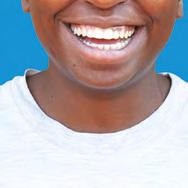
Case study Finding hope in food security































After training with Ripple Effect, and with the support of her self-help group, Claire began to turn her dusty compound into a kitchen garden. She was given seeds and trained to make compost from grass and began to see positive results. Luckily, she lives very close to a local market, and could walk there with her produce to sell. She began to make a steady profit.
I eat vegetables and fruits with every meal and feel there is a difference to my health.









“I saw other families developing but I felt hopeless and couldn’t see how I could do that.”
10
“I’m one of the first sources of vegetables in this trading area, and I get vegetables all year around. Working with Ripple Effect has made us popular!”
Claire now has two goats whose manure she uses to fertilize her crops. She grows cabbages, beetroots, onions, amaranths, tree tomatoes, chilli peppers, bananas, passion fruits, sweet potatoes and avocados. As well as vegetables, Claire has learned how to mulch and inter crop her coffee trees, improving the quality and quantity of coffee. She now sells to a local cooperative which guarantees her a fairer price for her coffee cherries.
With the extra she’s now making from coffee and vegetable sales, she has joined a savings group, which allows her to take out small loans to invest in her small business, and to save money for the future.

I chose to grow coffee because it is one of the good crops for income in this region. I get money from coffee produce and no longer struggle to pay for my health insurance.
11
Empowering women leaders
More than 20 years of work with rural farmer groups in Rwanda has shown us that when families and communities work together, they achieve more than they could alone. 67% of people Ripple Effect works with are women. And the data shows, when you empower women, you empower the whole community.

12
Our method
We use Transformative Household Methodology (or THM) to help build awareness of the relationships between men and women, parents and children within the household. By shining a light on who does most of the chores, and who makes most of the decisions, families can see where conflict arises from, and choose to change harmful dynamics.

Moreover, when men and women work together on the farm, yields improve, and so the rewards double.
“Whenever I earned money, I never bothered to discuss with my wife how to spend it; it was mine and I spent it as I wished; sometimes on unnecessary things. I am glad now we jointly decide how we spend family income which has led to developments in our home.”
Read Cecile’s story on page 16
Greening Girinka project
The impact
THM has brought tremendous positive changes for families and communities. After the three-year Ikawa n’Inka project in Nyaruguru district of Rwanda, 87.7% of project participants in self-help groups were making joint decisions in the home, compared to just 47% at the star t of the project.
The impact ripples out into other aspects of life. When women are involved in decision-making in the home, they are more likely to take up leadership positions in the community, and the ripple effect grows
Were elected by self-help groups.
59%
59%
132 farmer promoters Of those were women.
“When you Empower women, you empower the whole community”
Jean Baptiste, Ikawa n’Inka
I am proud I am perceived as a capable woman
Cecile, Greening Girinka
13
Case study Valerie’s path to leadership
Valerie lives in Kabuye cell, Nyarugenge Sector in Bugesera District with her family
Before Valerie joined a Ripple Effect Project, she and her family had no land to farm and were suffering from malnutrition. She lacked self-confidence, and the skills to help her family escape the cycle of pover ty.
Valerie describes herself as “isolated” from her community, and even her family. She remembers how she used to rely on her husband for income. They had frequent conflicts, and at times she felt like she was “useless”.
Since joining the Amahoro self-help group, Valerie has made remarkable changes in her life, and grown in confidence with the suppor t of her peers. She has hired land and now grows more vegetables and beans on it, increasing her income and improving her family’s nutrition.

Her self-help group elected her as their secretary, and then as a farmer promoter. With each new role, her self-esteem grew and so did her confidence. Soon, Valerie was elected to become one of her village leaders, an endorsement which she is very proud of.
Thanks to her hard work and her community's support , Valerie has:
Made a profit from growing and selling vegetables
Joined a savings group
Used her savings to buy two goats (after having no livestock)
Expanded her house and bought a tin roof
Been elected as a village leader
Social inclusion
Ripple Effect projects are designed so that whole community is included. Engagement with, and the par ticipation of, the most vulnerable in society is fundamental to ensuring no one is left behind as communities lift themselves out of poverty.
Self Help Group members are involved in suppor ting community members with disabilities to build houses, toilets and vegetable gardens, and those same vulnerable people are encouraged to take up positions of leadership within the community.
“People showed me their trust... I am convinced that I am able to do great things... as I have a say in my household and within my community”
Valerie and her husband in their garden
14
From subsistence to small businesses
Once the families we work alongside are food secure, we work with them to improve their financial situation. All direct project participants are given the opport unity to join a savings and loans association, made up of other farmers in their locality. These groups give farmers access to vital small loans that allow them to invest in livestock and other inputs and move from subsistence farmers to small businesses owners.
Traditionally, small farmers in rural Rwanda would have no access to loans, and often saving is seen as something only wealthy people can do. These culture shifts can be truly transformative.
Greening Girinka
Annual average household savings have increased from $35.65 at baseline to $155 (167,800 RWF) – a four-fold increase.
100% of community households are now saving, resulting in the annual average household savings increasing from $0 at baseline to $365 (395,200 RWF) among the SHG families, and $0 to $347 (375,700 RWF) among the community households.
Grow more Sell more Learn more
yearly savings Increased savings Communities Baseline savings $155 167,800 RWF $35.65 Baseline Greening Girinka $0 Baseline $365 395,200 RWF Ikawa n’inka
Average
Ikawa n’Inka
JAN FEB MAR APR MAY JUN JUL AUG SEPT OCT NOV CHANGE I N HOUSEHOLD SA VINGS DEC 15
Cecile wanted to start a tailoring business, and she debated with her husband until he agreed to let her pursue her dream.

Cecile, Greening Girinka
Cecile is part of the Greening Girinka project and used her savings to buy chickens. “The project gave me many skills and I start ed rearing poultry which produced eggs. As I sold eggs this project helped me to start rearing goats.”
From small beginnings, careful saving can improve farmers’ income which then allows more saving. Cecile says “I used to sell [my vegetables] in the local market and [then] I improved my crops production which increased their yields. ...I also planted fruit trees (passion fruits, tomato trees and papaya) and I expect good yields from them and possible surplus to sell”.
After improving crop and livestock yields, farmers like Cecile are encouraged to diversify their income streams, which helps create financial resilience.
Average household income generating activities

“After getting an agreement with my husband I enrolled in a tailoring course and at present time I have my own sewing machine - I created my own job!”
By increasing the number of income generating activities they take part in, families can improve their financial resillience and an income all year round.
I have my own sewing machine - I created my own job!
Increase Project Baseline
0.47 Baseline Greening Girinka 03 Baseline 08
4.04
Ikawa n’inka
16
Cecile, Greening Girinka
Other
project par ticipants in Greening
Girinka are successfully producing and selling banana beer, while those in Ikawa n’Inka are growing eggplant and amaranths and taking coffee beans to cooperatives to negotiate a better price

Average yearly household income
Average annual household income increased from $40.15 at baseline to $642.4 (695,500 RWF) by the project’s end.
Average annual household income increased from $163 at baseline to $817 (884,600 RWF) three years later.
$163 At baseline $817 By project’s end $40.15 At baseline $642.4 By project’s end Greening Girinka Ikawa N’inka
17
A coffee washing station at Nyampinga Coffee Co-operative
Business skills for AI technicians
In the Inka Nziza project, the success of our enterprise development work is measured differently. Ripple Effect is training and equipping Art ificial Insemination (AI) technicians and paravets to provide a vital service to local farmers.
The impact here is twofold: vets and technicians’ income improves as they create viable small businesses, whilst the community also benefits from healthier animals and the
improved Jersey cow breed, which produces higher milk yields with lower fodder input.
The profitability of AI businesses is increasing mainly due to an increase in the number of inseminations per technician. Farmers have also repor ted easier access to AI Technicians, with more technicians available in their area.
Profitability of Artificial Insemination businesses in the Inka Nziza project
44% 70% 95%
Baseline Project end
BaselineP roject end Government
The number of government technicians reporting business profitability has risen from 44% to 70%
Private 95% of private AI technicians say their businesses are profitable or very profitable
say es p
18
According to UNICEF, almost half of Rwanda's population is under 18. When these young people grow up, they will need sustainable livelihoods.
Youth-specific self-help groups in the Inka Nziza project have focussed on setting up sustainable enterprises and micro-businesses, which encourage young people to stay in the local area.
The Kuruzigama Youth Group in the Ikawa n’Inka project have come together to run a pig-rearing initiative. They increased their crop yields through agro-ecological farming methods, and pooled the profit made by selling surplus produce to buy land and establish their small business together
The Ejoheza Youth Group have used their income to purchase a grain milling machine to service their region and build a micro-business.
Over 45%
Percentage
n
rednunoitalupo
sraey81foega Youth
of R wa
ad s’ p
eht
19
Paravet story Gaudance, Inka Nziza project
For the last four years, Gaudance has been providing her community with an essential service that they wouldn’t ordinarily have access to. Paravets are self-employed community members who have been trained by Ripple Effect in simple veterinary practices to improve animal health and wellbeing.

With a passion for animal welfare, Gaudance is proud of the respect she now commands in her community. People look up to her and she can help them when they have problems with their animals. Gaudance also runs her own farm with cows and a kitchen garden, which has become far more productive since having the tools and training from Ripple Effect to make the most of her land.
Thanks to working as a paravet, Gaudance has been able to supplement her income from farming and improve her house so that it has three bedrooms (pictured). She has bought three extra hectares of land to grow vegetables on for her family and star ted a small tree-selling business. Next, she hopes to start her own veterinary shop in the village.
Thanks to paravets like Gaudence, everyone in the community benefits from healthier animals and better yields of eggs, milk and vegetables. It’s a ripple effect that goes on and on.
“We now have good health. Our children eat healthily, we have school fees for them and this is because of Ripple Effect Rwanda.”
20
Gaudance with her paravet kit
Livestock on sustainable farms
80 litres
More milk per month produced by farmers (Inka Nziza)
96% farmers
Now using ar tificial insemination (AI), up from 22% (Inka Nziza)
5 new Drought resistant fodder species introduced (Greening Girinka)
“In most African communities, livestock are an integral part of our agricultural system. They provide protein, bring higher returns for farmers, and their dung and urine regenerate depleted soils.
They are a crucial safety net for the poor.”
- Laurent Munyankusi, Country Director,
Ripple Effect are expert s in sustainable livestock management. We provide farmers with the tools and training to look after their animals in a sustainable and holistic way.
Instead of being left to roam, farmers are encouraged to keep cows in open barns, constructed with local timber, and fed on fodder grown on the farm.
This increases productivity and protects the local environment and farmers’ crops from overgrazing, allowing tired land to regenerate. Cows are less likely to get sick because they are kept in a controlled environment, and they have spacious exercise yards to make sure they’re healthy and happy.

21
Ripple Effect Rwanda
Jeanette, project par ticipant in Inka Nziza with her Jersey cow
Milk production has become more organized in the Inka Nziza project, with 50% more farmers using milk collection centres, which provide a consistent market and income. A greater number of farmers are now able to transpor t their milk by motorbike to the centres, which maintains a higher standard of milk and enables more time on the farm.

As well as milk from cows and goats, and eggs from chickens, manure can be used to reinvest nutrients into the soil, in turn helping vegetables to grow better. And keeping cows in open barns provides another benefit – it is much easier to collect manure from a cow that is managed on the farm, than one that is roaming the surrounding area.
A well-managed smallholding (typically environmental impact of all the livestock raised on the farm, and transform land care and productivity. As a whole system, these agroecological farms actually sequester carbon, and with careful management, tired land can be regenerated for future generations.
less than 0.5ha) can entirely offset the
“Having a cow has made us very happy. We no longer have to spend money on buying fer tilizers as we now have compost manure, we no longer have to buy milk; our children have enough milk to drink.”
Instead of being left to roam, farmers are encouraged to keep cows in open barns, constructed with local timber, and fed on fodder grown on the farm. This increases productivity and protects the local environment and farmers’ crops from overgrazing, allowing tired land to regenerate. Cows are less likely to get sick because they are kept in a controlled environment, and they have spacious exercise yards to make sure they’re healthy and happy.
Instead of being left to roam, farmers are encouraged to keep cows in open barns, constructed with local timber, and fed on fodder grown on the farm. This increases productivity and protects the local environment and farmers’ crops from overgrazing, allowing tired land to regenerate. Cows are less likely to get sick because they are kept in a controlled environment, and they have spacious exercise yards to make sure they’re healthy and happy.
Sturdy grasses such as napier provide excellent fodder for livestock, and their roots also help with soil retention whilst their leaves provide shade for smaller, more delicate plants. Every plant or animal on a Ripple Effect farm performs many roles, and nothing is wasted.
Small, shrub-like trees such as napier provide excellent fodder for livestock, and their roots also help with soil retention whilst their leaves provide shade for smaller, more delicate plants. Every plant or animal on a Ripple Effect farm performs many roles, and nothing is wasted.
“By adopting the Ripple Effect training, my cow became healthier and produced more milk. We sell our milk at the local milk collection centre, giving us a family income of 170,000 RWF.” ($158 USD)
22
Domitille, Greening Girinka project part icipant
Milk being transport ed to a local co-operative by motorbike
Dina, Ikawa n’Inka project part icipant
The Jersey Cow Solution
However, local cow breeds (Ankole) produce little milk, and Friesians, an exotic breed used in Rwanda, are large so require a lot of food, which means farmers with small plots really struggle to keep them.
Jersey cows offer a solution to this problem: they are small, require less fodder so can be kept on small farms, and they produce more milk. They are a much more sustainable option. But how to change the breed of a nation?
Training local vets in Art ificial Insemination (AI) techniques means more farmers have access to AI and Jersey genes, and they no longer need to use local bulls to impregnate their cows. As word spreads about these superior Jersey cross-breeds, more farmers want to be in on the action, and behavior changes over time.
In Rwanda, we love cows. Cows are a source of confidence, they produce manure for spreading on crops, milk for improved nutrition and they are a sign of wealth.
Cows have been used by the Rwandan government to lift vulnerable families out of pover ty after the Rwandan genocide, when livestock numbers were decimated.
In-calf heifers were gifted to poorer families on the condition that once the cow gave birt h, they would give the calf to a neighbor.
It ’s not just about the breed, animal welfare also plays a huge role in productivity and we have been training farmers and vets to look after their animals better too.
By Eugene Ndayambaje Project Manager for Inka Nziza

This helped to foster friendships in communities damaged by the genocide, whilst also giving farming families a lifeline.
‘Inka Nziza’ means good cow in Kinyarwanda, and that’s just what this project is creating: a good cow for Rwanda. Jersey cross-breeds offer a solution for poorer families on smaller plots of land, but they also offer the chance of reconciliation, something which I am proud to be a part of.
23
Our climate work
Locally appropriate solutions to the effects of the climate crisis in the Greening Girinka project
Ripple Effect has facilitated part icipant-led research into locally appropriate, climate-smart farming techniques. The data produced has helped us to design a project that suits the communities we work with.
We have now validated ten climate-smart techniques for use within smallholder crop-livestock systems, which will feed into future Ripple Effect project designs.
This work has been shared with local government and other stakeholders to encourage best-practice and seventy government extension workers have been trained in agroecological practices.
Keyhole gardens: a climate-smar t way to grow drought resistant vegetables

Investing in soil fer tility
Our climate impact
increased
farmers are now food secure
100% Daily income has
Farmers adopting climate-smar t solutions are now food secure (up from 10% baseline)
Average household daily income has increased from $0.11 per day to $1.76 (1,900 RWF) per day Milk production has tripled
Industrial fer tilizers are expensive, and they reduce soil fer tility over time. Using animal manure and grass to create compost is a free, organic alternative that has positive results.
Using locally appropriate livestock can enrich soils, boost milk production and improve nutrition overall, while also regenerating the local environment.
Through a combination of planting a variety of crops (legumes that fix soil nitrogen, alongside nutritious vegetables and fruit trees) and caring for the soil by mulching and composting, farmers have increased household income 16-fold. The average annual household income in the project has jumped from $40.15 per year to $642.4 (695,500 RWF).
24
Tree planting
Planting trees on farms helps to protect precious soil from being washed away in heavy rains, because the roots stabilize the soil. On a Ripple Effect farm, everything must have multiple uses to make the most of the available land, so the trees our farmers have planted also bear fruit. This produce can be sold at markets or eaten by families, improving nutrition and income.
Harvesting rain water
Too much rain can wash away precious topsoil, and too little can decimate a harvest. Farmers have been trained in how to harvest rainwater, with 127 water tanks installed in houses. In addition, four larger reservoirs have been installed, holding a combined 1030 cubic meters of water for the communities we work alongside. That’s just under half an Olympic swimming pool!
1030 Cubic meters of water storage installed
Renewable energy
40 biogas plants have been installed with families using this renewable energy for cooking.
Animal Welfare
Improving animal welfare can reduce the environmental impact of farming. By training farmers in basic veterinary practices and introducing five new drought-resistant fodder species, animals have become healthier. Average milk production in the project has tripled from 1172 Litres every 3 months to 3384 Litres per family
Additionally, keeping livestock in open shelters with spacious exercise yards helps to protect local greenery, and farmers’ crops, from overgrazing, and makes it easier to collect valuable manure and urine for composting and mulching.

Savings groups
Establishing village saving and lending associations means that now all households in the project are saving. The annual average household savings have increased from $35.65 to $155 (167,800 RWF). An increase of almost 500%.
Planting tree seedlings
Additionally, trees sequester carbon and help to balance the books when it comes to the farm’s climate-positive impact.
Most farmers report using these savings to pay for health insurance, which in turn ensures resilience of the community, family and farm. Savings are also used to pay for farm insurance, which protects their income if extreme weather damages their yields, an essential step in adapting to the changing climate.
354,870 tree seedlings were produced planted as par t of this project.
25
X5
By Valens Kanakuze Project Manager for Greening Girinka
When we first start ed working with farmers in the Greening Girinka project, people didn’t believe it was possible to grow more on the same dry, tired land. With the climate crisis making it harder to weather the extreme dry season, and predict when to plant, yields were suffering and morale was low.
To build trust and confidence takes time, and we use a range of approaches to get there. Kitchen gardens are a good entry point, because once farmers see the techniques working on a small scale, they are encouraged to transform their bigger plots of land.
We began by showing project participants testimonies from other farmers who had used climate-smart techniques to improve yields and resilience to extreme weather. We took them to visit other flourishing farms that had worked with Ripple Effect, so that they could see for themselves that change was possible.
On their return, those farmers helped other community members to build the vegetable gardens they had seen. Within three months, the kitchen gardens were brimming, and at that point we saw a big change in the community.
Through a combination of demonstration farms and peer farmer trainers, the community slowly adopted agro-ecological practices such as mulching, composting and use of organic manure, crop spacing, inter cropping and companion planting, leading to improved water retention and soil fertility. Crop yields improved as a result.
We began the project with 480 households and ended up with 1260 households taking part by the end of the three-year project, almost triple the original number. When you build confidence in the method, change follows. And the ripples spread out from family to family, community to community, and generation to generation.
Despite the huge challenges faced by farmers, it is possible for them to adapt to the effects of the climate crisis. They need support , and Ripple Effect’s contribution has never been more vital.
I’m helping communities to improve their lives, but they are also helping me. They give me confidence that change is possible.

26
Our vision for 2030
Our goal is to help 750,000 people in Rwanda out of pover ty by 2030








As par t of Ripple Effect International’s strategic goal to work with 5 million more people by 2030, we are aiming to help 750,000 people out of poverty in Rwanda.
This goal is ambitious but achievable, and we are already making significant progress. As well as the completed projects featured in this report , we have four projects happening right now
These projects continue our vital work to improve animal management and breeding practices, and to support coffee communities to grow their own way out of poverty, as well as breaking new ground.
In a current project we’re working directly with widows in Rwamagana district and suppor ting reconciliation with their communities after the genocide. Poverty is expressed not just in material terms but also in isolation and lack of confidence, which is something the widows we work alongside are bravely challenging and overcoming, in pursuit of a better life.
Our support ers and funders make this life-changing work possible, but it’s the project part icipants who are building stronger and more resilient futures in their communities. It is their confidence and drive that will create a thriving and sustainable rural Rwanda.
27
Thanks to all those involved in the Inka Nziza Phase 1 & 2, Greening Girinka and Ikawa n’Inka projects: farmers, staff, supporters and funders.
Thank you to Starbucks EMEA for sponsoring this publication.
Rwanda
Ripple Effect Rwanda PO Box 522, Kigali KG2 AV4 Kimihurura
www.rippleffect.org
UK Ripple Effect, The Old Estate Yard Newton st Loe, Bath BA2 9BR
US Ripple Effect US PO Box 40730 Arlington, VA 22204
Ripple Effect is Registered Charity no. 299717 (England and Wales) SC049792 (Scotland).
Ripple Effect US is a 501c(3) tax-exempt organization
Copyright Ripple Effect 2023.
























































































































































